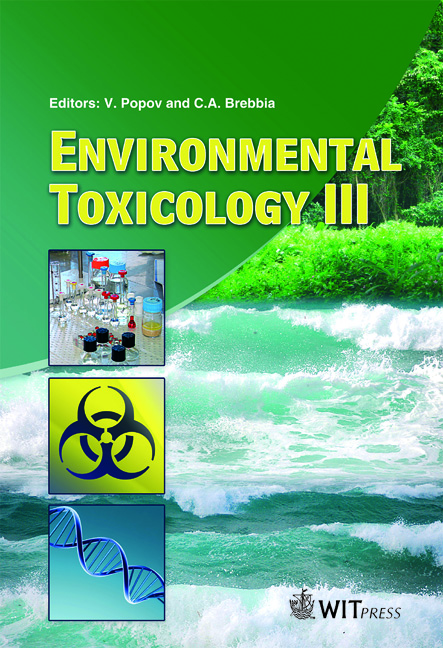Biostimulation Combined Treatments For Remediation Of Diesel Contaminated Soil
Price
Free (open access)
Transaction
Volume
132
Pages
9
Page Range
111 - 119
Published
2010
Size
309 kb
Paper DOI
10.2495/ETOX100111
Copyright
WIT Press
Author(s)
C. Calvo, G. A. Silva-Castro, I. Uad, M. Manzanera, C. Perucha, J. Laguna & J. Gónzalez-López
Abstract
Bioremediation is an important technology for the restoration of oil polluted environments by indigenous or selected microorganisms. In general, the rate of biodegradation depends on the number and types of microorganisms, the nature and chemical structure of pollutants to be degraded and the environmental conditions. In this study we have evaluated the efficacy of the application of four different biostimulation treatments for the biodegradation of diesel contaminated soils. The treatments applied involved: (a) the addition of NPK fertilizer + Ivey I surfactant; (b) the addition of NPK fertilizer + Ethanol; (c) the addition of NPK fertilizer + Biorem; and (d) oxidation by Fenton’s reagent combined with NPK fertilizer. Microbial activity was evaluated following growth of heterotrophic and degrading microorganisms, dehydrogenase activity and CO2 production. Hydrocarbons degradation was established by determination of TPH, alkanes, branched alkanes, pristane and phytane by GC/MS. Our results have shown that the application of NPK fertilizer in combination with Ivey surfactant is an efficient treatment to be applied in clay soil. Treatment with Fenton’s reagent previous to the application of NPK fertilizer also efficiently enhanced hydrocarbon biodegradation in saturated conditions. Keywords: bioremediation, hydrocarbon pollution, surfactant, Fenton reagent. 1 Introduction Bioremediation offers a more environmentally friendly alternative by taking advantage of the oil degrading microorganisms and by establishing and
Keywords
bioremediation, hydrocarbon pollution, surfactant, Fenton reagent





